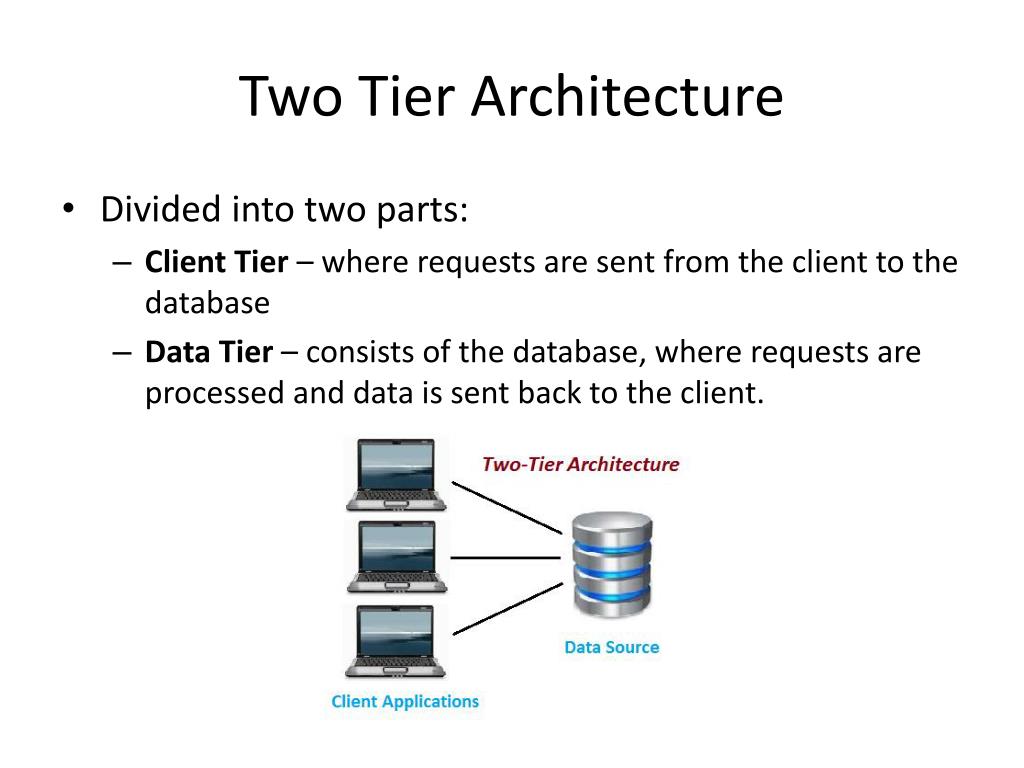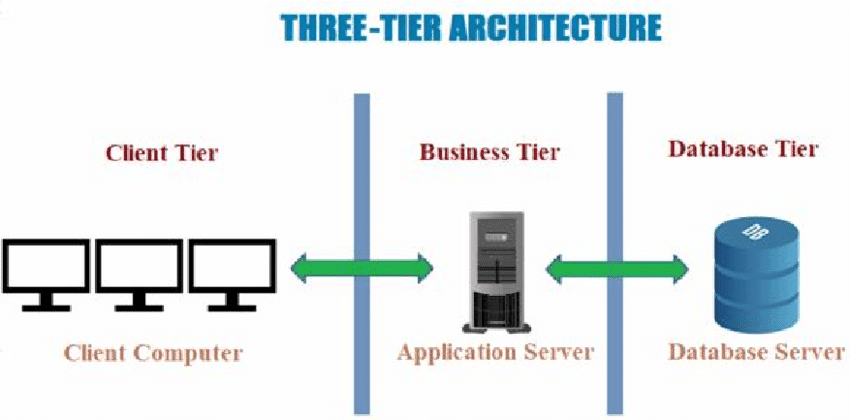Difference Between Two Tier And Three Tier Database Architecture Two Tier Versus Three Tier Java Architectures Download Table Difference Between Two Tier And Three Tier Database Architecture YouTube Database Architectures Different Types Of DBMS Architectures Two tier Vs Three tier Architecture By Gacheru Evans Medium 2 Tier And 3 Tier Architecture In Networking Explained CCNA TUTORIALS 2 Tier Architecture in DBMS 2 tier simple means two layers here tier means simply layer There are 2 layers one is the client layer The one where the data is stored i e the database server
The key difference between two tier and three tier architecture are Number of Layers 2 tier architecture has two layers client and server while 3 tier architecture has three layers presentation application and database Middleware 2 tier architecture does not have a separate middleware component while 3 tier architecture includes an In two tier architecture the presentation tier and consequently the end user has direct access to the data tier and the business logic is often limited A simple contact management application where users can enter and retrieve contact data is an example of a two tier application N tier architecture N tier architecture also called or
2 Tier And 3 Tier Architecture In Networking Explained CCNA TUTORIALS 2 Tier Vs 3 Tier Application Architecture Could The Winner Be 2 Tier 2 Tier And 3 Tier Architecture PPT Client Server Technology Two Tier Architecture Three Tier PPT Client Server Architecture PowerPoint Presentation Free Download 3 Tier Architecture 2 Tier Architecture Vs 3 Tier Architecture In DBMS DZone Database BEA Tuxedo System Fundamentals What Is The Difference Between 1 Tier 2 Tier And 3 Tier Architecture
Difference Between Two Tier And Three Tier Database Architecture
 Difference Between Two Tier And Three Tier Database Architecture
Difference Between Two Tier And Three Tier Database Architecture
https://www.researchgate.net/profile/Ming-Hsiang-Tsou/publication/236966259/figure/tbl2/AS:669986574045212@1536748655577/Two-Tier-versus-Three-Tier-Java-Architectures.png
A two layer architecture is usually just a presentation layer and data store layer These can be on 1 tier 1 machine or 2 tiers 2 machines to achieve better performance by distributing the work load A three layer architecture usually puts something between the presentation and data store layers such as a business logic layer or service layer
Templates are pre-designed files or files that can be used for different purposes. They can save effort and time by offering a ready-made format and layout for developing different type of material. Templates can be utilized for individual or professional tasks, such as resumes, invites, leaflets, newsletters, reports, presentations, and more.
Difference Between Two Tier And Three Tier Database Architecture

3 Tier Architecture In DBMS PREP INSTA

2 Tier Vs 3 Tier Application Architecture Could The Winner Be 2 Tier

2 Tier And 3 Tier Architecture

PPT Client Server Technology Two Tier Architecture Three Tier

3 Tier Architecture

2 Tier Architecture Vs 3 Tier Architecture In DBMS DZone Database

A three tier DB architecture places the process or application logic in the middle tier making it distinct from the Client User Interface and the Data Interface Construction and Maintenance A two tier DB architecture is relatively simpler to build and maintain A three tier DB architecture is relatively complex to construct and maintain

Location of Application Logic A two tier DB architecture either buries the application logic within the server database on the client inside the UI or both of them A three tier DB architecture buries the process or application logic in the middle tier Thus it acts as a separate entity from the Client User Interface and the data Interface

A 2 Tier Architecture in DBMS is a Database architecture where the presentation layer runs on a client PC Mobile Tablet etc and data is stored on a server called the second tier Two tier architecture provides added security to the DBMS as it is not exposed to the end user directly It also provides direct and faster communication

In general three tier n tier architecture includes another server layer as seen in Figure 11 3 2 11 3 2 This extra layer make it much easier to scale the system which makes performance much better resulting in a highly flexible and reusable structure The extra layer can have several purposes such as an application server or it can be

N tier or multi tier architecture refers to software that has its several layers rendered by distinct IT environments tiers under a client server logic The user interface Presentation Tier runs in a separate environment than the computation Business Logic Tier which in turn also runs in a distinct environment from the database
Advantages of 3 Tier Architecture Enhanced scalability Scalability is enhanced due to the distributed deployment of application servers Now individual connections need not be made between the client and server Data Integrity 3 Tier Architecture maintains Data Integrity Since there is a middle layer between the client and the server data corruption can be avoided removed Sorted by 7 I m guessing that you mean layered logical units of separation rather than tiered physical units of separation deployment An example of a tiered system would be a web server 1 tier delivering web pages another tier which draws on data from a database the 3rd tier The usual aim of a layered architecture is to separate
The two tier is based on Client Server architecture The two tier architecture is like client server application The direct communication takes place between client and server There is no intermediate between client and server Because of tight coupling a 2 tiered application will run faster The above figure shows the architecture of two tier